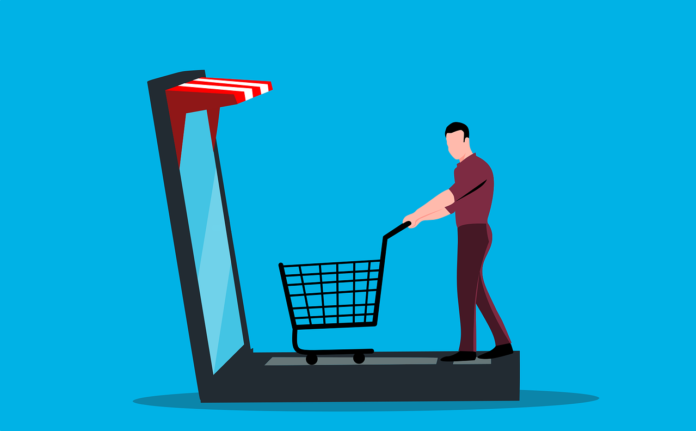In modern-day society, retail equipment is more crucial than ever. From supermarkets to department stores to mom-and-pop boutiques in the city center, consumers are looking for more well-equipped stores. So if you are a retailer, it is essential to have the necessary supplies at your disposal. It will enable you to get a competitive edge in the market by providing your customers with a hassle-free and convenient shopping experience. To give you a better idea, we have put together a list of must-have equipment for retail stores:
- POS System
A POS (point-of-sale) system helps retail stores operate more efficiently and effectively. It can quickly and accurately process transactions, track inventory levels, and provide real-time sales data. That way, store owners and employees can save valuable time and reduce potential errors.
By monitoring sales data and customer information, retailers can better understand what products are popular, which customers are the most loyal, and which promotions are the most effective. This information leads to personalizing the shopping experience and improving customer engagement.
Besides, if a customer has a question about a product, an employee can use the POS system to easily access relevant information, such as the product’s price, availability, and features. It can increase customer satisfaction. If you want to make the most of your POS system, investing in the right barcode scanner is a must. Among all the available options in the market, we recommend you buy a bluetooth barcode scanner from Code Corp for a solid performance.
- Checkout Supplies
How your customers are treated at the checkout can determine whether or not they will return to your store. Therefore, you should do everything in your power to leave a favorable impression of both your company and your product or service on the customer. That is where checkout supplies can come in handy. Checkout supplies include bags, receipts, pens, tissue paper, etc. They can create a professional and organized appearance at the point of sale.
Using eco-friendly checkout supplies can particularly help to promote a positive image of the store and improve its reputation among environmentally conscious customers. For example, using biodegradable shopping bags or receipts made from recycled paper demonstrates the store’s commitment to sustainability.
- Security Cameras
Security cameras create a safer and more secure environment for both customers and employees. Customers may feel more at ease knowing their safety is being prioritized. Likewise, employees feel more protected knowing they are working in a secure environment, which could also boost their productivity. If an incident of theft occurs, cameras may also be used as evidence by law enforcement agencies to hold criminals accountable.
However, apart from buying the latest security cameras, you should also install them in the place to make the most of these devices. The best areas to install security cameras in a retail store will depend on the specific layout and needs of the store. However, there are some general guidelines that retailers may follow.
Ideally, you need to place cameras in areas where theft and other forms of crime are most likely to occur. This may include the checkout area, where cash and other valuables are handled. It may also be advisable to install cameras in areas that are not easily visible to customers, such as the inventory room or the back office.
At the same time, you should position cameras strategically to get a clear view of the areas being monitored. Consider placing cameras at high elevations or corners where they can capture a wide field of view.
- Digital Price Tags
Digital price tags are more visually appealing than traditional paper or cardboard tags. You may easily update them and change prices without having to physically replace the tags on each item. It could be particularly useful when stores frequently change prices during sales and promotions. Additionally, digital price tags could be programmed to display additional information, such as product descriptions or special offers, helping customers to make a more informed decision.
Once you have chosen a digital price tag system, you will need to set up the tags and link them to your store’s inventory management system. This will typically involve installing the necessary software and hardware and connecting the tags to the internet so that you can update them remotely.
- Shelves
Shelves are an essential part of any retail store. Without proper shelving, it would be difficult for retailers to organize and display their products in an easily accessible way to customers. Shelves that are neatly arranged and labeled can make it easier for customers to find the products they are looking for. It will save them time and keep frustration at a safe distance. Additionally, having an ample supply of products on the shelves will prevent customers from leaving the store empty-handed, improving the chances of making a sale.
Shelves also help store owners improve their operations’ efficiency and organization. By using shelves, retailers can reduce the amount of space needed for inventory storage. Stores may organize products by category or other criteria and streamline the process for employees to keep track of inventory levels and restock items as needed.
While designing shelves, be sure products that are related to each other should be placed together, and the aisles should be wide enough for customers to comfortably move around. Besides, the way products are displayed on the shelves might also have a significant impact on customers’ decisions to buy. Attractive displays, such as props and product samples, can draw customers’ attention to specific products. As a result, they are more likely to navigate the shelves and buy items.
- Cleaning Products
In a retail setting, many people regularly come into contact with shared surfaces, such as shopping carts and checkout counters. By regularly cleaning and disinfecting these surfaces, retailers can help prevent the spread of illness and keep their customers and employees healthy. Plus, a clean and well-maintained store can create a positive impression on customers and make them more likely to return.
Another benefit of using cleaning products is that they can extend the life of your store’s fixtures and equipment life. For example, regularly cleaning and maintaining floors, walls, and shelves can prevent damage and keep them looking new for longer. This can save money in the long run by reducing the need for expensive repairs and replacements.
Conclusion
Opening a retail store is really exciting. But if you do not have the right supplies, you may face serious problems. Customers might have a bad first impression and never want to return to your store. In other words, it could make or break your entire venture. That is why you should stay on top of all the equipment covered in this blog.





